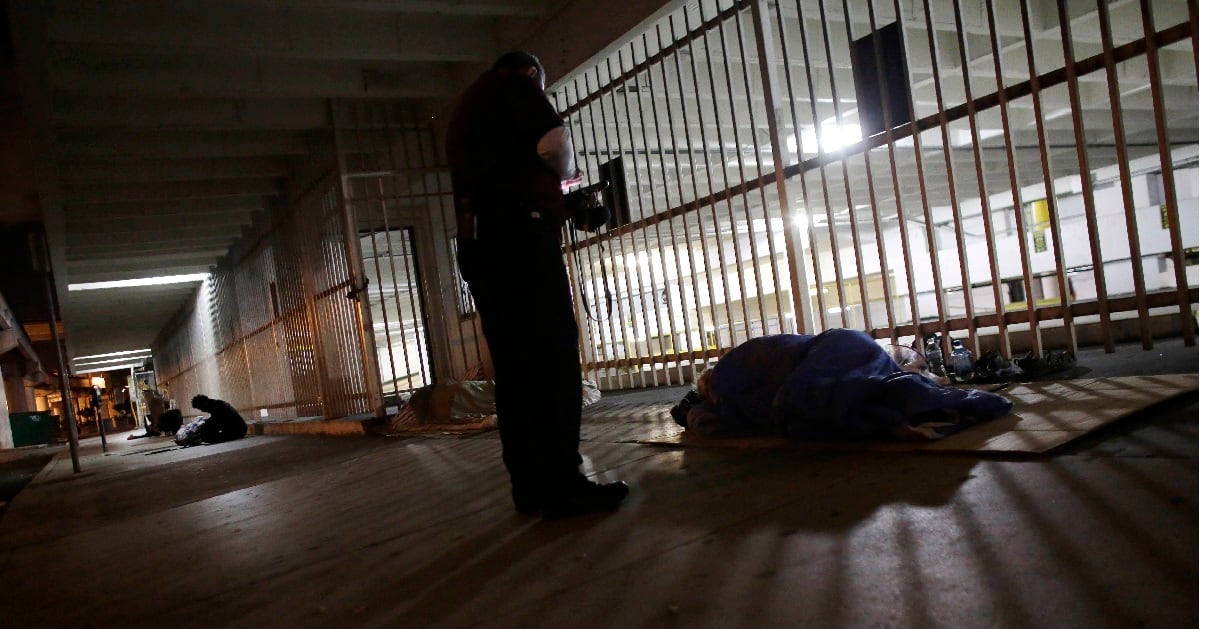WASHINGTON — The number of homeless veterans decreased by about 5 percent this year according to new estimates from federal researchers, an encouraging turnaround after disappointing results the year before.
Housing and Urban Development officials now estimate about 38,000 veterans across the country are without stable housing on any given night, roughly half the number on the streets in 2010.
The drop among female veterans in the last year was even more significant. HUD officials estimated a 10 percent drop in homelessness among that population, and credited the good news with continued commitment from federal, state and local leaders on the issue.
RELATED

“Our nation’s approach to veterans’ homelessness is working,” said HUD Secretary Ben Carson in a briefing with reporters on Thursday. “Nationally we’re seeing declines in the number of sheltered and unsheltered veterans … To date, 64 local communities and three states have effectively ended veterans homelessness.”
Carson credited much of the improvement on a series of initiatives started under President Barack Obama, including the HUD-VA Supportive Housing program. That effort connects housing vouchers with local charities to provide a holistic approach to veterans physical and financial health.
Despite the positive news, veterans advocates say the number still shows significant room for improvement.
“Down is always a good thing, especially given the affordable housing crisis we’re seeing in America today,” said Kathryn Monet, chief executive officer of the National Coalition for Homeless Veterans. “But we still have a sense that if leadership were more committed to this issue, we could have seen even bigger decreases.”
Monet said federal funding for veterans homeless programs remains strong, but advocates worry that VA leadership in recent years has put less emphasis on the issue than in the last administration.
In 2009, then VA Secretary Eric Shinseki announced a department goal of ending veterans homelessness nationwide in five years. From 2010 to 2016, that number fell by more than 35,000 individuals, almost half of the homeless veterans population at the start of the push.
But last year, VA officials acknowledged that reaching zero homeless veterans nationwide likely was not a realistic goal. The number of homeless veterans increased from 2016 to 2017 by several hundred people, breaking the streak of positive results in the effort.
Carson and VA Secretary Robert Wilkie reiterated on Thursday that the departments are looking to end homelessness among veterans “as soon as possible” rather than setting specific timelines.
The 2018 point-in-time count estimate, gathered at the start of the year, is the first tracking President Donald Trump’s term in office.
Last year, administration officials largely blamed the yearly increase on sharp rises in homelessness in a few western states, most notably California. This year, 33 states saw a decrease, including California, which accounts for almost 30 percent of the nation’s homeless veterans population.
Wilkie, who is scheduled to visit Los Angeles in coming days, said officials there have spent the last year increasing focus and resources on the housing problem. He is hopeful that trend will continue in the future.
The full point-in-time estimate is available at HUD’s web site.
Leo covers Congress, Veterans Affairs and the White House for Military Times. He has covered Washington, D.C. since 2004, focusing on military personnel and veterans policies. His work has earned numerous honors, including a 2009 Polk award, a 2010 National Headliner Award, the IAVA Leadership in Journalism award and the VFW News Media award.





